#The History Of Safiye Sultan
Text
Mistakes in the Magnificent Century part III
(title, ranks and traditions)
Some facts might be the same or very similar to the ones in previous parts,but they will be discussed from different angle.
1. Valide Sultan title
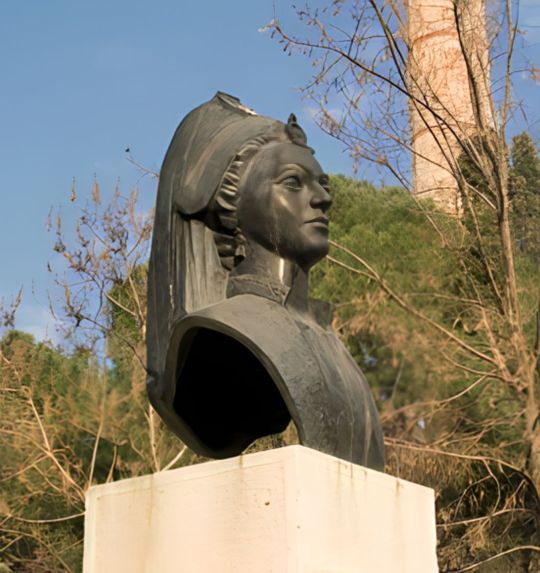
As I have spoken in the previous chapters, pre 1520 mothers of sultans were not sultans at all, they were titles as hatuns, though treated with utmost respect. In 1520 as Suleiman the Magnificent ascended the throne, he bestowed the title of Sultan to her mother Ayşe Hafsa, thus making her the first person in the ottoman history to become sultan from slavery. However, for Ayşe Hafsa being Sultan was not the same as the Valide Sultan that we know today. She was sultan yes, and she was the mother, so "Valide" was the proper address,from her children, as it was for every mother in the Ottoman empire, she was registered as "the mother of Sultan Suleiman", therefore in some sense, we can say she was not "Valide Sultan".
The first person,who actually made the "Valide sultan" a thing and officially registered herself was Nurbanu. So, the first Valide sultan with its full meaning was not Hafsa,but Nurbanu, who was registered as Valide Afife Nurbanu Sultan.
2. Haseki Sultan and Hürrem's marriage.
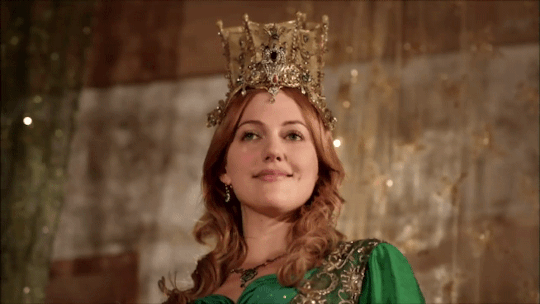
There were more than just several miscon- ceptions about the subject in the show.
First and foremost it was created specifically for Hürrem,so neither Hafsa nor Mahidevran have ever had the title. It also brought another mistake about Hafsa,that I will explain below,but now I will just make clearer how, when and why the status was created.
It was almost definitely created in mid-1534 after the death of Ayşe Hafsa Sultan and was probably legalised by their marriage, which by some sources is mentioned to be in 1533. If this is right, then it would mean, Suleiman married Hürrem before he gave her the status of Haseki and the marriage only freed her,but the most common and for me the most logical version is that after the death of Hafsa Sultan, Suleiman married her and gave her the title.
The death of Hafsa Sultan is a crucial part in the story, nor because she had some kind of objection towards Hürrem or her promotion,but the legal status of Hürrem reached its peak of necessity after her death. As we know, Ayşe Hafsa was a trusted ally and Confidant of uprising Sultan, even during his time as shehzade, so during the campaigns, his mother was the supervisor of the capital and his family, so the sultan could go to war without worrying about what he was leaving behind. However, after Hafsa's death things changed, Süleiman lost beloved mother and most trustworthy person around him, he needed to act immediately,as the campaign was near. He needed someone,whom he could entrust Harem, Family and the capital. His children were little, Sisters(whom by the way he trusted very much) were all married and Hürrem did not have a proper rank. It is said that he also discussed the candidate of high ranking harem servants, one and most promoted one of whom, in my opinion, would have been Gulfem, but he finally found the best possible solution that would affect his empire for centuries. He married Hürrem, gave her the rank of Haseki Sultan and left her in charge of the Harem, Family and the empire.
Hürrem became the first Haseki sultan in history.
Misusage of the title did not and here and there, not only the status and function,but even relevance of achievement was changed here. In the very first episode, Nigar kalfa made it clear that giving birth to a son, was enough to achieve it however, originally only the chosen ones could become Hasekis until its relevance faded during Murad's reign and completely lost exclusivity during Ibrahim's.
Essentially, the original function of haseki sultan was filling the absence of Valide, therefore only Hürrem and Nurbanu can be considered as the "original Haseki Sultans". Later many women were given the status, however the show made it wrong. Mahidevran,Mahfiruz and Halime never held it, however Şevikar, referred as Şevikar hatun in the show, was actually Haseki Şevikar sultan, the fifth Haseki of Ibrahim, three of whom, Ayşe, Mahinerv and Saçbağli, were left out, which is kind of understandable, because they had no importance in plot, unlike Turhan, never became Valide,unlike Saliha Dilaşub and Muazzez and had no influence on Ibrahim,Unlike Şevikar and Humaşah.
Their social standing is also misportrayed in the show, where Haseki ranks below and bows to imperial princesses, while in real life it was the other way around.
3. Daughters of Ottoman Princesses

In the show, we met three daughters of the ottoman princesses: Esmahan,Huriçihan and Humaşah. They are referred to as Sultans,but in real life the daughters of imperial princesses were not called so,instead they had the title Hanimsultan and ranked even below the imperial consorts. The only exception to that was Humaşah, the daughter of Mihrimah Sultan, who received the title and prestige of the Sultan.
4. Harem Kalfa

In the show, they are just giving people the rank left and right. Nigar was already a high ranking, trusted servant of harem,but it turned out that she had only been there for 6 years. Fidan hatun was banished for attacking Sultan,but after a while she returned and became Kalfa, in Kösem melek hatun received rank out of the blue etc.
In real life, however, becoming kalfa was a long process. As we know,there were hundreds or even thousands of girls in the harem,but only a handful of them would become favourites,but what would happen to others? After ten years of being a harem resident some of them would have been transferred from harem and soon married off, some could by freedom, while others, usually the smartest and most responsible ones,would go to a special school that lasted two years, they would revive extensive training, both intellectual and physical, after that they could return in harem as teachers and overseers and if they were good enough they could promote.
There was actually quite a complicated hierarchy of harem servants,not only there were Kalfa's who had duty to supervise certain works like food or laundry(later even coffee),but there were administrative ranks, that they could achieve:
Mistress chief treasurer(Baş Hazinedar usta): she was head of the harem treasury.
Treasurers(Hazinedars): there were other hazinedars as well, who worked in harem treasury. Baş hazinedar usta was their direct superior.
Imperial Kalfa(Hünkar Kalfası): Personal kalfa of the padişah.
Lady stewardess(Kahya kadin/Kethüda Hatun): she ranked below imperial consorts,but her role raised during sultanate of women, when Gülfem and Çanfeda held the office, they were right hand women of Chief Harem managers(Hürrem and Nurbanu) therefore second in command of the Harem.
Senior Kalfa(Büyük Kalfa): Head of Kalfas, she was responsible for literally everything that was happening in the harem, sultans and şehzades treated her with respect and called "my kalfa" or "your grace"
Lady secretary: secretary of administrative organs of harem.
Junior kalfa( Küçük Kalfa): Senior kalfa was their direct superior. They had ranks within( second- ranking, third ranking, novice etc.) They were sometimes teachers and daily overseers.
Çanfeda for example entered the harem with Nurbanu, so in late 1530's or early 1540's. Nurbanu became favourite and went to Manisa, while Çanfeda remained in the old palace, in 1566 she was already a high ranking kalfa in the old palace, when Nurbanu called her. That would mean she was sent to train as kalfa in late 1540's or yearly 1550's, therefore she would have a decade or two to raise in ranks.
5. Princely harem.

In the magnificent century, prince usually gets his harem, whole in Topkapi palace, which is the lie through and through. They went even further and made up with the rule that the prince can not have a child with their concubine until they get their province to rule. Why would they be allowed to have concubines,but not having a child, when contraception is still unreliable.
Actually, their case was far more easier, princes would revive their sanjaks while still very young, their mothers, governesses and close servants would carefully choose their harem and leave the palace with their mother and full sisters. That also brought another mistake in the show. In the flashbacks, we can see Ayşe Hafsa and Hatice visiting Suleiman in Manisa, however Ayşe Hafsa along with Fatma and beyhan left for Manisa with Suleiman in 1512, while Hatice,being 4 years older than Suleiman, got married the same year.
6. Regency
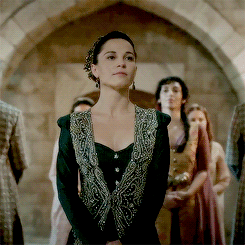
They introduced Kösem's regency as something unheard of,while completely neglecting Handan and Halime.
Handan was the first woman ever to rule as regents in her son's stead. She appointed viziers, discussed political matters and built a trusted circle for her son.
Halime was not officially registered regent but due to the insanity of her son, paşas asked her to rule the state after the rebellion she herself organized.
Kösem's and Turhan's regency is well known, so I will not speak about it.
7. Kösem's wedding

Not exactly the mistake as it is not proven, but as the event is highly unlike, I'll just put it there.
In 1609 it is said that Ahmed had four children with two women,but neither of them were married to him. In the two latters, one form 1612 and other from 1616, the 1612 letter straight out mentions her as sultan's concubine, who he loves the most and in 1616 she is mentioned as juts Haseki,but nothing is said about the marriage( I am not adamant about him not marrying her,I am just saying that it's unlikely, however I admitt she might indeed was concubine in 1612 and after the death of Mahfiruz, Ahmed married her and raised her stipend),however early in Kösem's regency vencians questioned ottoman practice, that mother of sultan was honoured and even given the regency,despite not being married to his father. As we know in Venice and generaly in Europe, source of power for woman was her marriage and not just motherhood. That is a time, when it was "unrevealed" that ahemd married her before he died,(if that latter is to be believed than Kösem and Ahmed did not marry in 1613), now it was actually thought that it was false information used by Kösem to strengthen her position in the eye of Venice as they needed friendly relation with them. That is not widely accepted,but it can be strengthened by the fact that Vencians still did not believe it, so perhaps they knew for sure that it was lie?
8. The death of Halime sultan and Mustafa.

In the show Halime, like many others, is victim of making Kösem seem more powerful, while Mustafa was killed by Murad. In real life, Mustafa died of natural causes, probably because of epilepsy in 1539, he was buried in Hagia Sophia and the coffin was placed in a mosque built for him. Halime is buried next to him and no permission of reburial was asked or granted, therefore Halime was not killed by Kösem, she went to the old palace and lived a long life.
9. 1517-1540
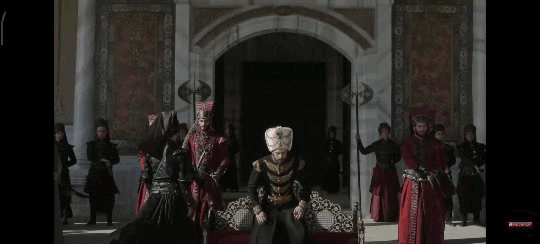
I'll be honest, I don't remember much of those episodes, they were boring and monotonous for me, but what I remember is one part from Kösem's iconic " The state you are talking about is mine" speech. She mentioned that she took over the reins of the state from Ahmed 15 years before the event, well that is a huge lie. Though the show runners tried to make Kösem all powerful, the invincible mastermind behind every single breath people drew in the empire,but she was actually quite powerless from time to time and the period between 1617 and 1623 is one of such. She was still young and inexperienced that time and main powerhouses in the empire were Halime and Osman's faction and she was not the leading force during any of the rebellions, she was allie of Halime, who, according to many historians, had major influence that time and the great impact on Kösem. Some even go as far as claiming that she persuaded Osman to kill Mehmed, so Kösem would take her side.
In short, Kösem did not have reins of sultanate for 15 years,but only about 10.
As I said, I don't remember much about the episodes, but from what I remember, Kösem had something to do with Murad's death. I'll be short on this: that's a lie.
10. Coup of 1648

The show made Kösem something of a filicidal tyrant. However, In real life her tyrannical tendencies appeared only after the death of Ibrahim, which he had nothing to do with. The ones behind the incident were Turhan and her faction. Kösem indeed took part in the Ibrahim's dethronement for the good of everyone,but mainly because she had seen the mad sultan dethroned,but lived. Mustafa had a similar situation,he was dethroned and locked in kafe, while his mother was sent to the old palace, which Kösem was absolutely willing to do. However, Turhan made her move and had Ibrahim executed to get rid of opposition for good, or perhaps because of the old resentment. Things did not go exactly as she had planned though, Kösem became regent and visibly started to avenge Ibrahim's death, it became clear that she was not going to hand over any power to Turhan and after she started to oppose even went as far as attempted dethronement of Mehmed(however she was not going to kill him.)
Therefore the child killing monster the show made her become is straight out a lie. One of her sons died of natural causes and the other was killed by outer forces, that she tried to avenge.
#history#historical drama#16th century#magnificent century#magnificent century kosem#mc: kosem#ottoman empire#ottomanladies#historical events#historical figures#sultanate of women#haseki hurrem sultan#hurrem sultan#nurbanu sultan#kosem sultan#safiye sultan#muhtesem yuzil kosem#historyedit#historical#ottoman sultanas#ottoman history#ottoman#mistakes in the magnificent century
145 notes
·
View notes
Text
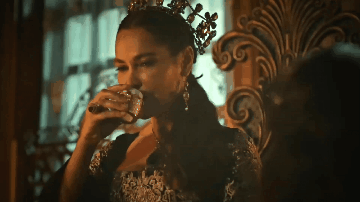

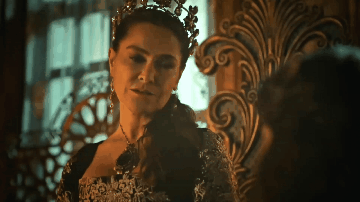

One of the episodes that showcase the magnificence of Safiye Sultan is 4 Episodes
#safiye sultan#hülya avşar#muhteşem yüzyıl kösem#muhtesem yuzil kosem#magnificent century kosem#magnificent century kösem#magnificent century#magnificent woman#muhte┼ƒem y├╝zy─▒l k├âsem#costume#historical drama#history#perioddramaedit#periodedit#period rp#muhteşem yüzyıl#ottoman#periodedits#osmanlı#period drama#period#perioddramasource#perioddramagif#my gifs#gif#roleplay#fyp#dailywomanedit#dailyactresses#femaledaily
21 notes
·
View notes
Text





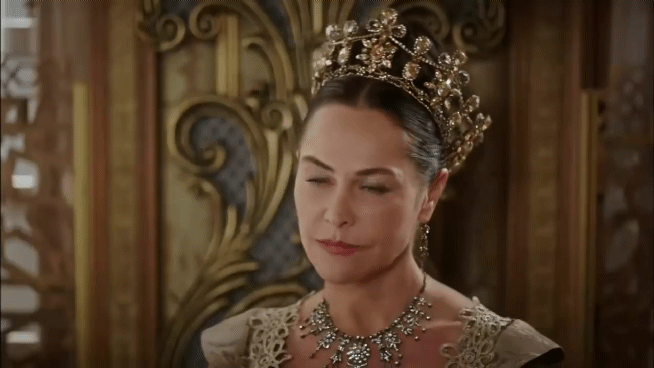
#history#magnificent century#muhteşem yüzyıl#ottoman#sultanas#ottoman history#ottoman sultanas#ottoman valide#valide sultan#valide kosem sultan#magnificent century kosem#muhteşem yüzyıl kösem#magnificent century: kosem#hurrem gif#haseki hurrem sultan#hurrem sultan#Safiye sultan#My gif
41 notes
·
View notes
Text

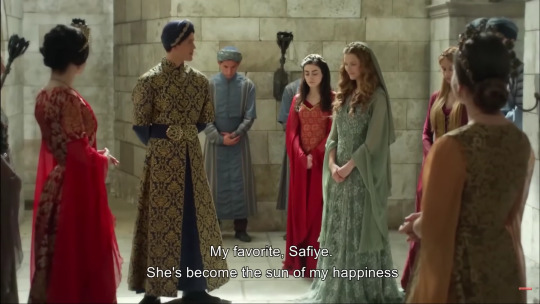

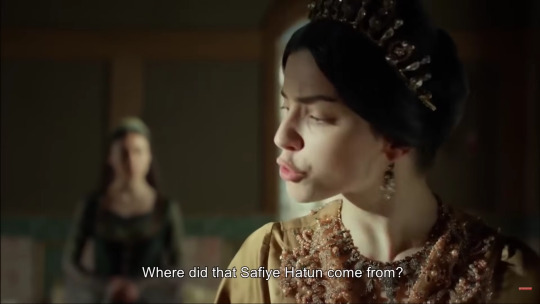


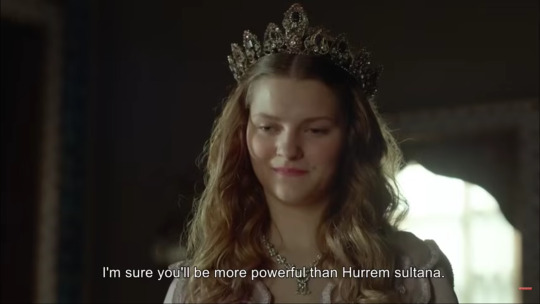

—The Imperial Harem, by Leslie Peirce
7 notes
·
View notes
Text



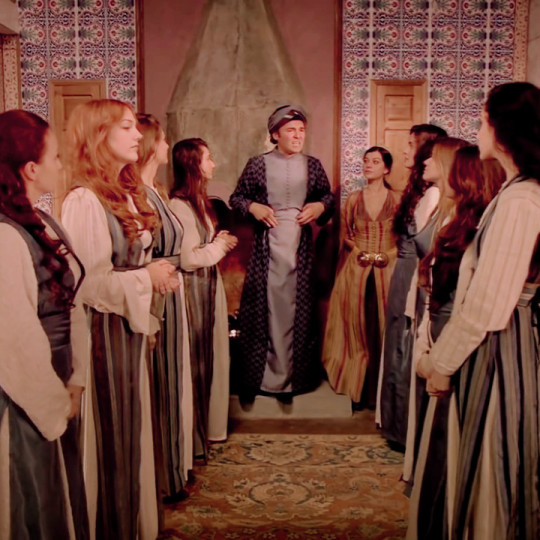

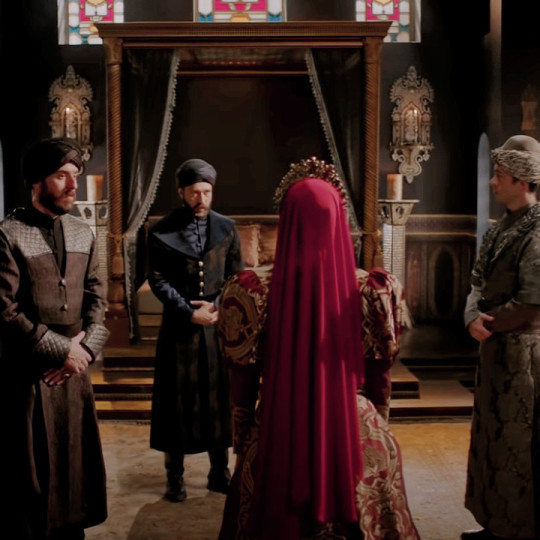
“Because there's no other place on earth, where you enter a slave and become a sultana who rules the world.”
“The haseki, a slave concubine and no blood relation to the reigning sultan, ranked higher than the sultan’s own sisters and aunts, the princesses of the dynasty. Her elevated royal status derived from the fact that she was the mother of a potential future sultan.
Kösem was the last of the colorful and influential hasekis of the “sultanate of women”. Henceforth, the position of haseki would lose its special status. The presence of more than one haseki was a significant change in the reigns of Murad and Ibrahim, signaling that the age of the favorite was coming to an end. In this period the meaning of the title haseki begins to shift from a single “favorite” to something more general like “royal consort”, similar to the earlier khatun.”– Leslie P. Peirce - The Imperial Harem: Women and Sovereignty in the Ottoman Empire
#magnificent century#haseki hurrem sultan#hürrem sultan#mcedit#sultanas#muhteşem yüzyıl#hurrem sultan#nurbanu sultan#kosem sultan#nurbanu#safiye sultan#halime sultan#kosemedit#muhtesem yuzyil kosem#ottoman history#ottoman harem#ottoman empire
267 notes
·
View notes
Text
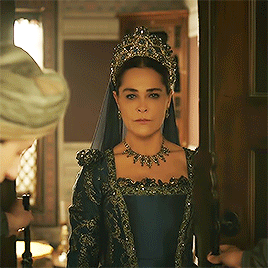


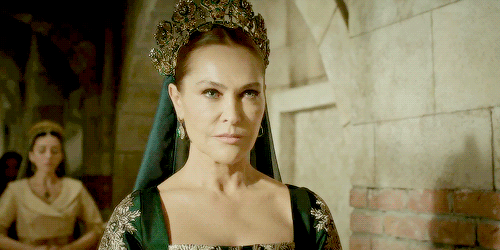
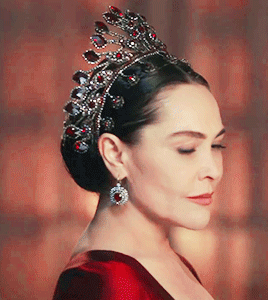
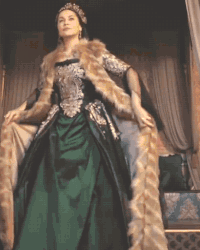
𝑂𝑡𝑡𝑜𝑚𝑎𝑛 𝐷𝑦𝑛𝑎𝑠𝑡𝑦 𝐻𝑖𝑠𝑡𝑜𝑟𝑦 𝐴𝑝𝑝𝑟𝑒𝑐𝑖𝑎𝑡𝑖𝑜𝑛 𝑀𝑜𝑛𝑡ℎ:
𝑊𝑒𝑒𝑘 1: 𝑉𝑎𝑙𝑖𝑑𝑒 𝑆𝑢𝑙𝑡𝑎𝑛𝑠
𝐷𝑎𝑦 3: 𝑀𝑒𝑙𝑖𝑘𝑒 𝑆𝑎𝑓𝑖𝑦𝑒 𝑆𝑢𝑙𝑡𝑎𝑛, 𝑀𝑒𝑙𝑖𝑘𝑒 𝑆𝑎𝑓𝑖𝑦𝑒 𝐵𝑢𝑦𝑢𝑘 𝑉𝑎𝑙𝑖𝑑𝑒 𝑆𝑢𝑙𝑡𝑎𝑛
#melike safiye sultan#melik safiye buyuk valide sultan#muhtesem yuzil kosem#magnificent century: kosem#ottoman dynasty history appreciation month:week 1
8 notes
·
View notes
Text
》 Handan Sultan 《
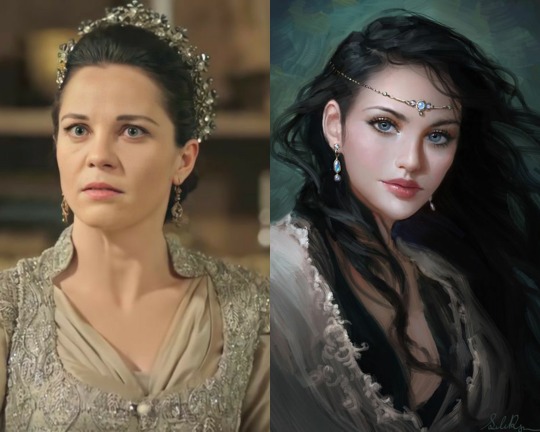
Gerçek Adı : ?
Doğum tarihi ve yer : 1567
Ölüm tarihi ve yer : 26.11.1605
Kökeni hakkında : Kesin olarak Kafkasyalıdır.
~~~~~~~~~~~~~~~~~~~~~~~~~~~~~~~~~~~~~~~~~~~~~~
( Servezad Kalfa tarafından Saraya getirilmişdir.)
(Servezad Kalfa Mahidevran Sultanın öz yeğenidir.)
~~~~~~~~~~~~~~~~~~~~~~~~~~~~~~~~~~~~~~~~~~~~~~
İlk tahmine göre : Çerkesdir. Kabardey soyundan, Sogonew ailesine mensubdur.
İkinci tahmine göre : Bosnada doğmuşdur. Boşnaktır.
~~~~~~~~~~~~~~~~~~~~~~~~~~~~~~~~~~~~~~~~~~~~~~
Vuslat Canpolat, Safiye Ergün, Ekrem Koçubey gini isimlerin Handan Sultan'ın akrabası olması onun Şogenow ailesinden bir Çerkes kızı olduğunu doğrulamaktadır. Handan Sultan, Cerrah Mehmed Paşa'nın akrabasıymış. Cerrah Mahmed Paşa, 3 Mehmed'in sünnetini yapan cerrahdır.
~~~~~~~~~~~~~~~~~~~~~~~~~~~~~~~~~~~~~~~~~~~~~~
Eşi : 3 Mehmed
Evlilik tarihi : 1579
Çocukları : Şehzade Selim
Şehzade Süleyman
1 Ahmed
İsmihan Sultan
Fatma Sultan
~~~~~~~~~~~~~~~~~~~~~~~~~~~~~~~~~~~~~~~~~~~~~~
Handan Sultan tarihde merhametli ve iyi kalpli biri olarak geçse de Şehzade Mahmud'un idamında parmağı olduğuyla ilgili tahminler vardır. Çünki Şehzade Mahmud idam edildikten sonra Handan Sultanın küçük oğlu Şehzade Ahmed Veliaht ilan edildi. Handan Sultan'ın bu duruma tesiri olup, olmadığıyla bir belge yoktur. Sultan 1 Ahmed tahta 13 yaşında çıktığı için devleti tek başına idare edemeyeceği için Handan Sultan Saltanat Naibesi oldu ve ölene kadar devleti tek başına yönetti. Handan Sultan ölene kadar kardeş katline izin vermedi. Bu veraset sisteminde ekber ve erşad yasasının gelmesini sağlamıştır. Venedik elçisi Giacomo Surian 1603 yılında yazdığı raporda 3 Mehmedin Hasekilerinden bahis etmiştir :
"Sultanın ilk karısı ( yani Handan Sultan) ve son karısı afet bir güzelliğe sahiplermiş."
Tarihte "Benli Haseki" namıyla mehşur Kadın Handan Sultandır.
Sultan 1 Ahmed annesinin ölmünden sonra daha sert bir tabiata bürünmüştür. Muhteşem Yüzyıl Kösem filimnde gösterilenlerin aksine Handan Sultan zayıf bir karakter değildi. Handan Sultan ağır bir hastalıktan ölmüştür,( Ancak belkide bir suikaste kurban gitmişte ola bilir. Sonuçta düşmanlar vardı.). Filimde gösterilen kendini zehirlediği sahne yalan ve yanlıştır.
~~~~~~~~~~~~~~~~~~~~~~~~~~~~~~~~~~~~~~~~~~~~~~
Real name : ?
Date and place of birth: 1567
Date of death and place : 26.11.1605
About Origin: He is definitely Caucasian.
(Bred to the Palace by Servezad Kalfa.) (Servezad Kalfa is Mahidevran Sultan's nephew.)
According to the first guess: Circassian. Of Kabardian ancestry, he belongs to the Sogonew family.
According to the second guess: He was born in Bosnia. She is Bosnian.
~~~~~~~~~~~~~~~~~~~~~~~~~~~~~~~~~~~~~~~~~~~~~~
Vuslat Canpolat, Safiye Ergun, The fact that Ekrem Koçubey's names are relatives of Handan Sultan confirms that she is a Circassian girl from the Shogenow family. Handan Sultan was a relative of Cerrah Mehmed Pasha. Cerrah Mahmed Pasha is the surgeon who performed the circumcision of 3 Mehmed.
Husband : 3 Mehmed
Marriage date : 1579
Children: Şehzade Selim
Sehzade Suleiman
1 Ahmed
Ismihan Sultan
Fatma Sultan ~~~~~~~~~~~~~~~~~~~~~~~~~~~~~~~~~~~~~~~~~~~~~~
Although Handan Sultan is a merciful and good-hearted person in history, there are speculations that he had a hand in the execution of Şehzade Mahmud. Because after Şehzade Mahmud was executed, the younger son of Handan Sultan, Şehzade Ahmed, was declared Crown Prince. There is no document as to whether Handan Sultan had any influence on this situation. Since Sultan Ahmed I ascended to the throne at the age of 13, he could not rule the state alone, so Handan Sultan became the Regent of Sultanate and ruled the state alone until his death. Handan Sultan did not allow fratricide until his death. In this inheritance system, the law of akbar and ershad came. Venetian ambassador Giacomo Surian mentioned 3 Mehmed's Haseki in his report in 1603:
"The Sultan's first wife (i.e. Handan Sultan) and his last wife had a stunning beauty."
The famous woman known as "Benli Haseki" in history is Handan Sultan.
After the death of his mother, Sultan Ahmed I assumed a harsher nature. Handan Sultan was not a weak character, contrary to what was shown in the movie Magnificent Century Kösem. Handan Sultan died from a serious illness (but maybe he was assassinated. After all, there were enemies.). The scene in the movie where he poisons himself is false and wrong.
~~~~~~~~~~~~~~~~~~~~~~~~~~~~~~~~~~~~~~~~~~~~~~
The picture is representative. Resim temsilidir
9 notes
·
View notes
Text
SAFIYE SULTAN // HASEKI SULTAN
“She was the Haseki Sultan and legal wife of Murad III and Valide Sultan of the Ottoman Empire as the mother of Mehmed III and the grandmother of Sultans Ahmed I and Mustafa I. Safiye was also one of the eminent figures during the era known as the Sultanate of Women. She lived in the Ottoman Empire as a courtier during the reigns of seven sultans: Suleiman the Magnificent, Selim II, Murad III, Mehmed III, Ahmed I, Mustafa I and Osman II.”
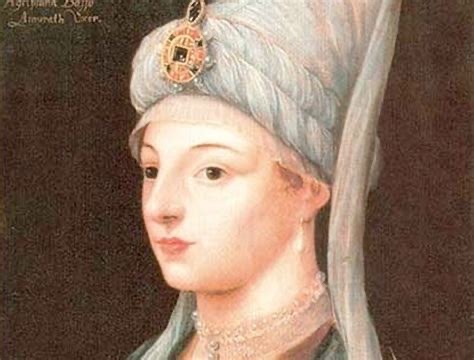
0 notes
Note
hi!! what are your thoughts on Turhan, and if you were in a charge of a third season around Ibrahim's reign, how would that go?
Turhan sultan is such a wasted potential and I was very disappointed with how her character was played out. Nothing is shown about her other than being boss woman who wants her mad husband killed to pave the way for her son. The problem is we aren’t even given a proper relationship with her and her son, he is there to solely give her power. Yeah sure, she like everyone wanted power, but when her only flesh and blood was going to drink poisonous milk and she is only worried because she will lose the power she gets throw him…that extreme level of being shitty, she surpassed Safiye’s hard nature. Her character is very bland , we only see her “powerful” version, we don’t know how she got this power and what aspect in her character that makes her maintain this power. In every character there has to be both shitty and good traits so we could relate and reason with the character, but with Turhan we only see a random girl boss who killed an elderly woman. That’s not like Kosem-Safiye at all because we both see and hear their POVs and we could reason with both to an extent. We saw that Kosem at first was impressed by Safiye but Safiye’s actions threw her off, then years passes when we see Kosem (the main protagonist) doing some similar actions to Safiye and we start reasoning.
I guess the writers wanted to make Turhan be the complete opposite of Hurrem. Turhan appearance scene has the same bgm used with Hurrem ,however, while Hurrem seems to be moving on the beat very smoothly and innocently, Turhan is showing arrogance and coldness.It is shown that Hurrem is fighting because she had to , while Turhan is fighting because she wants to. And ngl the contrast between them is an interesting idea to go about, but it was rushed.
As for what I’d do. I’d have her introduced in Murad IV’s reign which is kinda accurate historically btw, Turhan sultan entered Istanbul during the period of 1636-1639 which fits the show order because Murad IV dies in 1640 and the chaos with Ibrahim happened while Murad was ending so have her instead of Zarife so she’d have a little bit of a backstory and show contrast between how she and Ibrahim were at first then how they became later. As for what I’d do generally in that period, I’d show more of Ibrahim’s mad antics and his harem. Prominent thing during Ibrahim’s reign was his many women so I’ll have them showcased more and instead of ridiculously putting Turhan over them, I’ll stick with history and have Turhan to be pushed to the back. In little Mehmed reign show Kosem ultimate power unleash and show how Turhan was humiliated by Kosem yet still tried to stand up for herself. So I’d basically have Turhan be complete opposite of how she was portrayed instead of a random girl that has power all of sudden, I’ll showcase her rise to power , her struggles as well as her wins. I’ll stress more on her relationship with her son cause realistically she was more like Handan with how she was scared for his life.
10 notes
·
View notes
Video
youtube
10 Facts You May Not Know About "Safiye Sultan" | The History Of Safiye Sultan
|
#safiyesultan #safiyesultanhistory #sultanselimII #sultanmuradIII #sultanmehmedIII #sultansuleiman #hurremsultan #safiyesultanfacts #ottomanempire #ottomanempirehistory #safiyesultanbiography #hasekisultan #validesultan #In4mativeVideos
#Facts You May Not Know About Safiye Sultan#The History Of Safiye Sultan#Safiye Sultan History#Who Was Safiye Sultan#Interesting Facts About Safiye Sultan#Things About Safiye Sultan#Safiye Sultan and Sultan Murad#Full History Of Safiye Sultan#Biography Of Safiye Sultan#Safiye Sultan Biography#In4mativeVideos#Who is Safiye Sultan#Safiye Sultan Life History#Tomb of Safiye Sultan#Safiye Sultan Death#Safiye Sultan Facts#Nurbanu Sultan and Safiye Sultan#Sultan Murad#Nurbanu Sultan#Safiye Sultan#Sultan Mehmed
1 note
·
View note
Photo



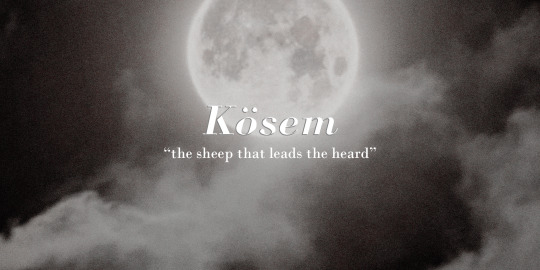

Sultanate of Women + names meaning
#mc#mck#ottoman history#hurrem sultan#nurbanu sultan#safiye sultan#kosem sultan#turhan sultan#name meanings#magnificent century#magnificent century kosem#myedit#mcedit#mckedit#sultanate of women#aestehtic#history
289 notes
·
View notes
Text
Mistakes in Magnificent Century part I
In part I I would like to speak about mistakes they made while writing characters. Their ages, titles, origins etc.
Let's start with Ayse Hafsa Sultan:
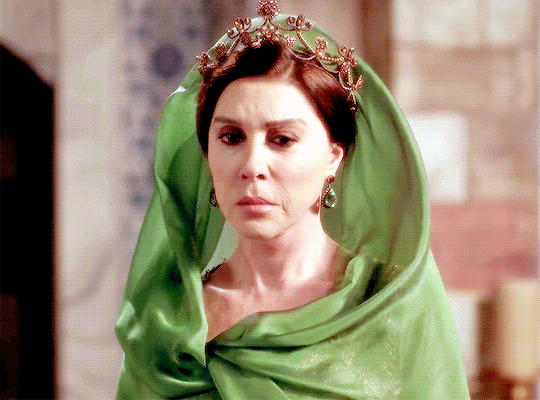
Several things about her were done wrong. First of all, She was not Crimean princess. There are two possibilities that although contradicts one another counters her royal origin. 1. There was another concubine named Ayse,who was daughter of Crimean khan, while she was called Ayse Hafsa for that reason 2.( I agree with that possibility more ) there was no concubine from Crimean family Sultan Bayazid would never let Selim, who was not his favourite, to gain such allie, nor would khan of Crimea risk to marry her daughter to non-favoired prince. Besides, Selim did not have much of a support from Crimea during his Rebellion.
As we more or less agreed that Ayse Hafsa was not Crimean, now we have to agree on where she was from. Legendary mother of the Magnificent sultan was actually converted slave of Caucasian origin, therefore she was either Circassian or Georgian.
Third thing about her is her title. Screenwriters both demoted and promoted her in this case. She was not "Valide Sultan" as we know today, first holder of that title would be Nurbanu 40 years after her death. She was Sultan and respected mother Padisah yes,but those two honours never joined for her. She was simply " Mother of Sultan Suleiman",who had title of Sultan instead of Hatun. While Nurbanu was full fledged "Valide Sultan" and was addressed so. Despite not being Valide Sultan, she was the first slave in Ottoman history, who was elevated to Status of Sultan that was never underlined in the show.
Other mistakes about her are how they represented her pre-1520 life, which I will discuss in Part 3 about "Titles, ranks and traditions" and her relationship with daughters- in law, that will be discussed in part 2, that will be specifically about relationships.
2. Ages of Suleiman's sister.

In the show Suleiman Seems to be older, followed by Sah or beyhan, Fatma being somewhat middle and Hatice as baby of the Family, while actually going backwards. One thing I want to make clear is that all the full sisters of sultan were older than them(before 1522 of course), half sister could have been either younger or older. So Fatma, Beyhan and Hatice despite being portrayed as younger sisters were definitely older. A more accurate sequence would be:
Hatice- c. 1490
Fatma: 1491-92
Beyhan: most likely 1493
Suleiman: 1494
Hafsa: 1495
Sah-huban: 1500
Suleiman also had at least three brothers orhan, salih, who seemed to be older than Suleiman, a sister who likely died during childhood and Shehzade sultan or Hanim sultan, who was either another sister or perhaps she never existed and all the little sources about her is actually about hatice.
3. Origin of Sah Huban Sultan.

She was not the daughter of Hafsa and older sister of Hatice, she was actually the youngest of shown siblings,born as the only child of an unknown concubine registered as " The mother of Sah Huban Sultan".
4. Origin of Hurrem

In the show she was portrayed to be Crimean and was addressed as " Russian slave" numerous times. However, she was actually from Ruthenia, it was then part of the Polish crown, now it's part of Ukraine, so definitely not Russian.
5. Forgotten Children
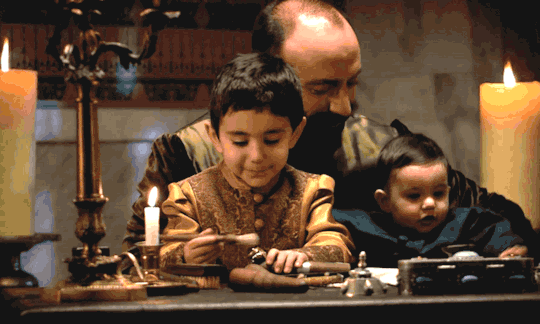
Apart from the six children that were shown in the show, Suleiman had four other children. Three sons and a daughter.
Shehzade Mahmud and Shehzade Murad were born before Hurrem arrived and had different mothers. Mahmud was the eldest born in 1512, Murad was younger than Mustafa born in 1519. Raziye was born between 1513 and 1518, but most likely she was born in 1513-14 as she seems to be the second child and old enough to be considered Mahidevran's(which is by the way false). All three of them died in 1521 as the result of the plague.
The fourth child Shehzade Abdullah was born as the fourth child of Hurrem and Suleiman, born in 1525 and died in 1528. His date of birth is kind of troubling, some historians argue if he was born in 1525,some even say he was Mihrimah's twin, but considering no birth of twins registered, definite ages of other kinds and his appearance in Hurrem's letters Abdullah seems to be born in 1525.
6. Nurbanu's Triplets

Mistakes about the birth of Selim I daughters are more or less clear, let's speak about Selim II as well.
In the show, triplets- Sah, Esmahan and Gevherhan were introduced as younger twin sisters of shehzade Murad. In reality, all three were older but certainly not twins, Sah was not even Nurbanu's daughter, she shared the birth year with Gevherhan though, both were born in c.1544, then was Esmahan in 1545, Murad in 1546, at this point Nurbanu stopped giving birth to any more kids, last of Selim II's kids was Fatma born in 1559.
7. Origin and death of Gulfem hatun
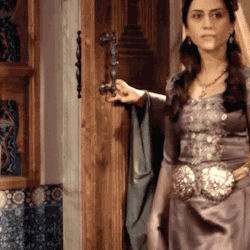
In "Magnificent century" Gulfem is portrayed as Suleiman's first concubine, who bore a son,but lost everything after he died. In reality, Gulfem was one of the highest ranking harem managers, whom Suleiman trusted Hurrem to, she was overseeing her education and well-being, bonding with future Haseki Sultan in the process. Gulfem actually became the closest friend and Confidant of Hurrem, about which I will speak about in part II.
Her death was also portrayed inaccurately. She was not killed for the attempted murder of Suleiman, The closest rumor to it is him executing Gulfem for rejecting him,but she actually died of old age. Suleiman had no reason to execute Gulfem,there is a version were Gulfem exchanges her Night to other concubine to for money to build complex,but there are so many flaws in this theory:
1. There was no such thing in harem as "my turn and your turn"
2. It was strictly against the traditions to call harem servant, especially one from the highest ranks, and considering when it happened in kate nineteen-early twentieth century at caused some probmens,which means tradition was never broken before
3. Gulfem had right to send concubine to Suleiman and even reject one already chosen.
4. Suleiman had no known concubine that time
5. Gulfem was not building anything as all of her projects was already finished.
6. Even if she was building something, it would cost so much mere concubine would never have enough money to help it. Gulfem's daily stipend was 150 akches, which is almost four times as much as Mahidevran's and almost as much as imperial princesses', while titles concubines were receiving 1-6 depending on their status.
7. Even if she needed something she would ask it to either Suleiman, Mihrimah or Sah huban as we know it had happened before and they thought her as family member.
8. Even if we just jump these 7 reasons and somehow accept that Suleiman realy called her that night , he would never kill her for that, she broke no rule, she needed money for project, he would understand this.
9. Gulfem was childhood friend of Suleiman, she was already a high ranking woman when mahidevran came,so she was certainly older than her,who was likely born in 1498-99, she was even older than Suleiman most likely. She was a childhood friend of one of Suleiman's sisters so her date of birth could vary from 1490 to 1493. That would make her between 69 and 72 in 1562. Dieing at such age is nothing strange even today, live past 60 was actually achievement in her era. There is no need to look for intrigue where there is none. Several theory existed,but show chose most dramatic one,that happened to be least likely.
8. Safiye's arrival

I have nothing against the portrayal of her origin, but about how she got in Murad's harem. Accord- ing to MC she was Mihrimah's gift. However,in real life she was raised and educated at Humaşah sultan's court,who later gifted Sifiye(then called Meleki) to her cousin.
9. History of Kösem

In Magnificent Century Kosem young Anastasia was kidnapped as a gift of Safiye to Ahmed per his accession. Actually, Kösem, then called Mahpeyker, was a servant of Handan Sultan and met Ahmed in his mother's personal Gardens. Ahmed developed a "Childhood crush" towards her and Handan,aware of what it could cause, had Kösem beaten up and exiled. When Ahmed ascended her recalled her and brought back.
10. Another forgotten child.

In the show, Şehzade Mehmed died without any kids, while in reality, he had a posthumous daughter born in 1543 named Humaşah. Who grew up to be one of the most powerful women in the Ottoman empire. She was one of two favourite grandchildren of Suleiman and Hurrem and due to the death of her father, she was raised in the household of her grandmother, so she would have been deeply involved in their later life. However, her existence was completely cut out, while the role and importance of Ayse Humaşah, daughter of Mihrimah Sultan was reduced into nothingness.
#history#16th century#historical drama#magnificent century#magnificent century kosem#mc: kosem#medieval women#hurrem sultan#kosem sultan#safiye sultan#nurbanu sultan#gulfem hatun#sultan suleyman#ottomanladies#ottoman history#ottoman#ottoman empire#ottoman sultanas#historical figures#historical events#haseki hurrem sultan#ayse sultan#valide sultan#historical fiction
131 notes
·
View notes
Text





In 4 Episodes, Safiye Sultan's appearance in the garden, her green caftan and brown fur
#safiye sultan#hülya avşar#muhteşem yüzyıl kösem#muhtesem yuzil kosem#magnificent century kosem#magnificent century kösem#magnificent century#perioddramaedit#periodedit#period rp#muhteşem yüzyıl#ottoman#periodedits#osmanlı#period drama#period#perioddramasource#perioddramagif#historical drama#history#costume
18 notes
·
View notes
Text
Sultanate of Women (1520-1683)







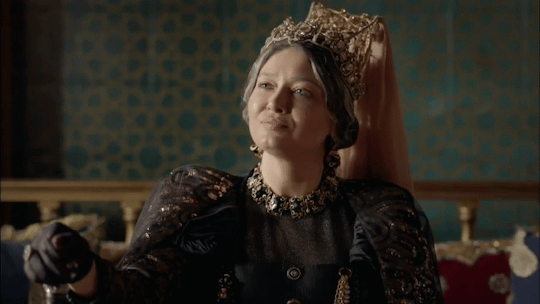

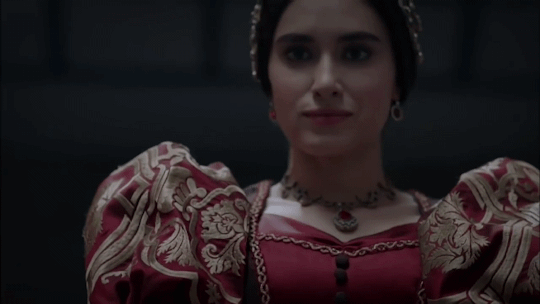
#history#magnificent century#muhteşem yüzyıl#ottoman#sultanas#ottoman sultanas#ottoman history#ottoman valide#valide sultan#woman in ottoman empire#woman in history#sultanate of women#sultanate#haseki nurbanu sultan#haseki#haseki sultan#haseki hurrem sultan#malika safiye sultan#safiye hatun#safiye sultan#hurrem sultan#aleksandra hatun#afife nurbanu sultan#nurbanu sultan#cecilia venier baffo#valide kosem sultan#magnificent century kosem#baş haseki turhan sultan#turhan sultan
53 notes
·
View notes
Photo
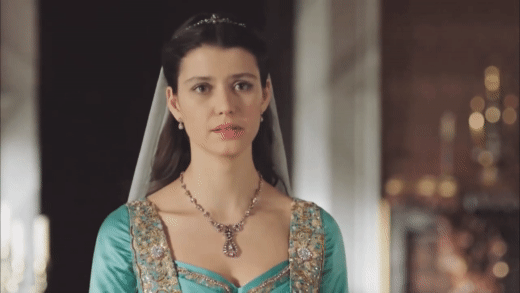



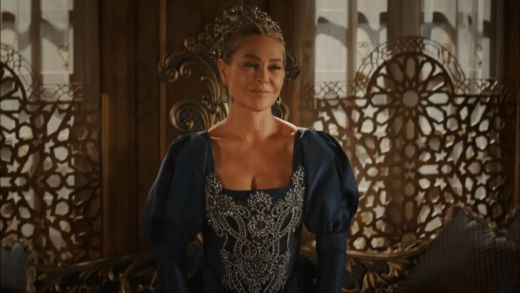
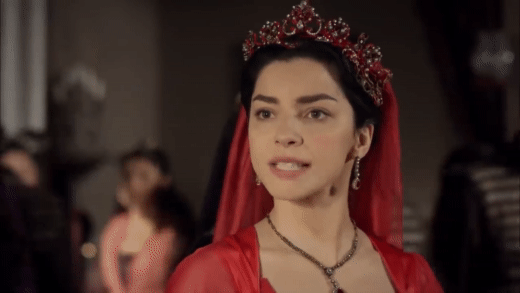

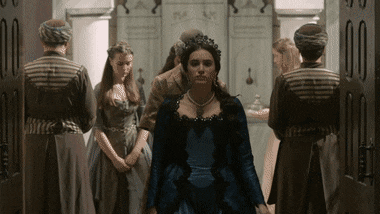


Favorite historical women- Ottoman Empire
1. Mahpeyker Kosem Sultan
2. Ayse Hafsa Sultan
3. Hurrem Sultan
4. Esma Sultan
5. Safiye Sultan
6. Nurbanu Sultan
7. Halime Sultan
8. Turhan Hatice Sultan
9. Handan Sultan
10, Mihrimah Sultan
#not in any particular order#Favorite#Favorite historical women#history#historical women#historical people#historical drama#historical characters#ottoman empire#Sultana#mahpeyker kosem sultan#ayse hafsa sultan#hafsa sultan#Kosem Sultan#mahpeyker sultan#hurrem sultan#haseki hurrem sultan#Esma Sultan#safiye sultan#Nurbanu Sultan#afife nurbanu sultan#halime sultan#Turhan Hatice Sultan#turhan sultan#Handan Sultan#Mihrimah Sultan
81 notes
·
View notes
Text


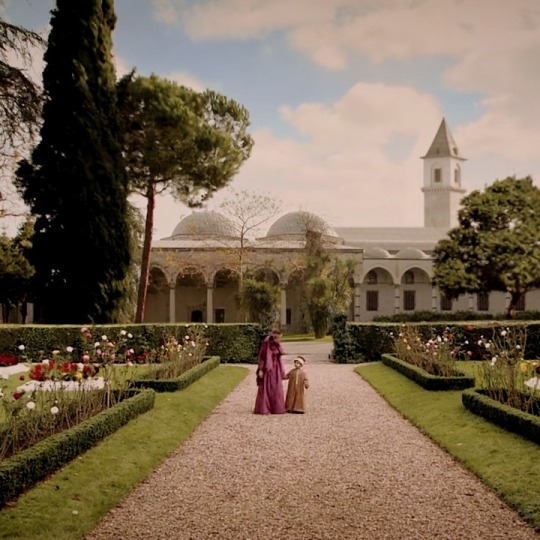


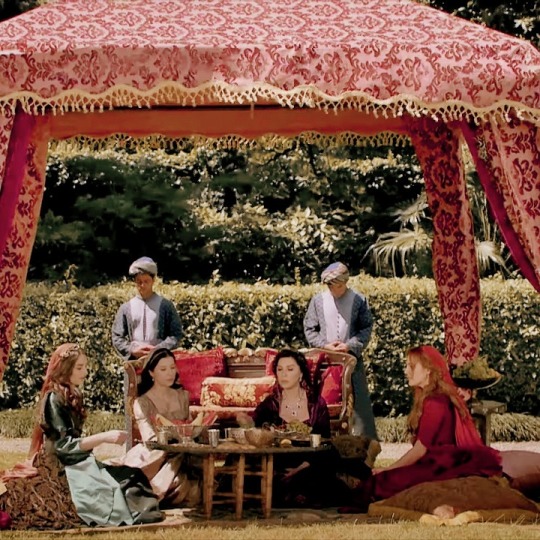
The Ottoman Imperial Harem
❝ The imperial harem was much like the household harem, only more extensive and with a more highly articulated structure. In our period, the head of the harem was the mother of the reigning sultan. The queen mother exercised authority over both family members — royal offspring; the consorts of the sultan, who might themselves acquire considerable power; and unmarried or widowed princesses — and the administrative hierarchy of the harem. [...] as the more astute and well informed of European observers commented, the imperial harem was more like a nunnery in its hierarchical organization and the enforced chastity of the great majority of its members.❞ — Leslie P. Peirce, The Imperial Harem: Women and Sovereignty in the Ottoman Empire
❝ It was [Hürrem] who transformed the imperial harem from a residence for women of the dynasty into an institution that wielded political influence. Royal women following in her footsteps crafted powerful roles in Ottoman politics while serving as advisers to their sons and, in the seventeenth century, rulling as regents.❞ — Leslie P. Peirce, Empress of the East
#magnificent century#haseki hurrem sultan#hürrem sultan#mcedit#sultanas#nurbanu#nurbanu sultan#safiye sultan#kosem sultan#muhteşem yüzyıl#turhan sultan#halime sultan#ottoman#ottoman empire#ottoman history#ottoman harem
395 notes
·
View notes